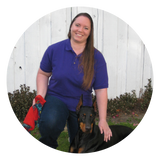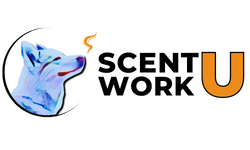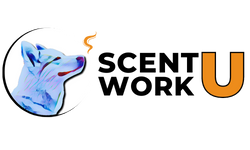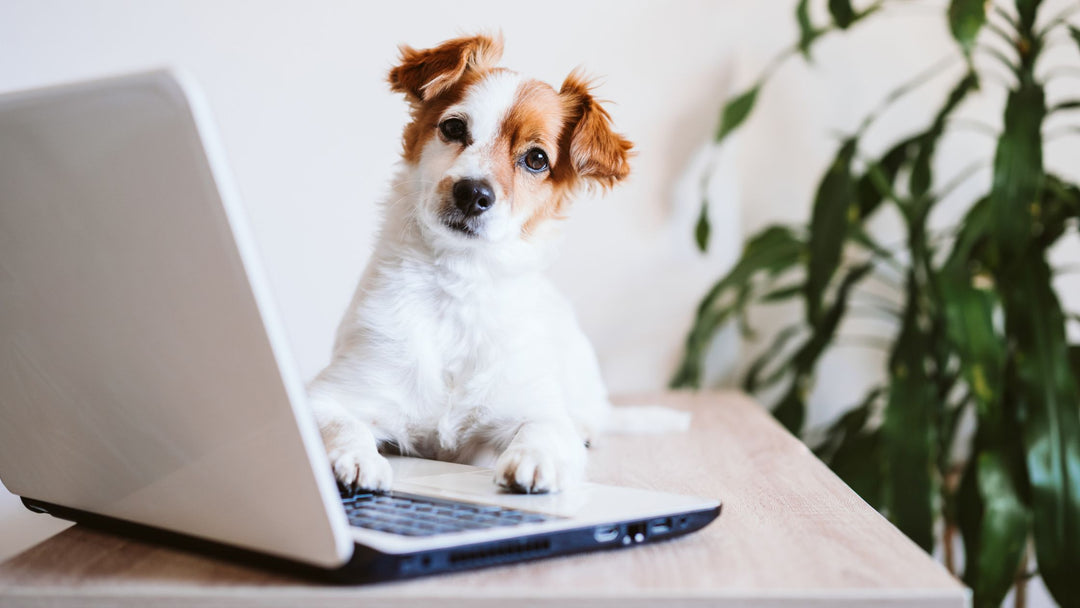When Helping is Actually Hurting

We all want our dogs to succeed. To go into a space and nail their hides. To be focused and joyful hunters who love what they do. Yet, there are times when our dogs seem to struggle. It is inevitable. They cannot seem to pin down where exactly a hide is located. As the seconds tick by, our blood pressure begins to rise, a knot forms in our chest and the thought of, “I need to help them” enters our mind.
Here is the rub though: stepping in to help, in this exact moment, may do more harm than good in the long run.
LEARNING IS STRESSFUL
“YOU SAID THE BAD “S” WORD!”
Yes, “stress” is quite loaded in the training vernacular. However, we must all recognize that stress is indeed a normal part of life, and thus, a normal part of learning.
It was stressful when we first learned how to balance our floppy blob of an infant body to sit upright.
It was stressful trying to pull ourselves around as we learned to crawl.
It was DEFINITELY stressful when we battled against gravity attempting to walk for the very first time.
Yet, we endured all these stressful moments and now sit upright and walk as though it is second nature. Those initial stressful moments of learning coordination and developing the strength and endurance required to physically tackle these tasks was monumental at the time but necessary in the end. If our parents or guardians never allowed us to figure these things out for ourselves, instead constantly stepping in to “help”, we may have never learned how to sit up, crawl or walk!
But how does this apply to Scent Work?
Training is supposed to encourage learning, that is the whole point. The dog learning what a particular odor puzzle looks like and how to solve it. Some of those puzzles may be super challenging and complex, even when that was not our intention in designing a search.
Take a container search where a hide is placed inside of an open box covered by another empty box. The point of the exercise is to see if the dog is comfortable and confident enough to move the empty box out of the way to get to their hide. However, unbeknownst to you, the airflow within the search area is causing the odor to billow into the empty box, follow along the lid and then pool onto an area rug next to yet another empty box. If the dog doesn’t work the space in a super specific fashion, they are NOT going to find this hide.
“Well, then I should move in and help them!”
Why?
What will the dog LEARN if you do so? That when the going gets tough, their person is going to rush in and showcase the hide to them? If so, we have taught the dog the game is, “my handler finds hides, points them out to me and I get cookies” instead of, “there are cookie opportunities out there, I must go find them!”.
See the difference?
“But they are getting stressed!”
Perhaps, but there are different types and levels of stress. Context matters.
Are they still actively working?
Are they sticking with the problem?
Are they determined to sort it out?
If the answer to these questions is yes, BREATHE and let the dog work. Think of the LEARNING that will occur when the dog DOES find this hide. They will have a better understanding of how the odor in this type of situation works. Even more importantly, they will learn they CAN do it and the value of being tenacious and sticking with a problem instead of giving up.
“So, I should never step in?!”
“Never” is not an overly helpful word in dog training. Outliers and exceptions to rules pop up all over the place.
“Okay…does that mean I should step in? I am so confused.”
Let me try to help this make a bit more sense.
Your dog is working the same exact search previously described. You’ve taken the advice to breathe and wait. Working away, your dog is still having a hard time. They keep skipping the first empty box. You feel a pit in your stomach that they may not get close enough to get a whiff of the odor plume. Then you start noticing them asking you more questions, by stopping to look at you. Maybe they do a full body shake-off or suddenly scratch out of nowhere. Even though it is cool, they are starting to pant. You then see them display some whale-eye. There has been a shift. The dog is no longer actively working or trying. They are starting to fade.
In that moment, you have a decision to make: has the dog shown any inclining that they are going to be able to solve this hide? If not, then it is time to pull them out of the search.
“WHAT?!”
You may stop clutching your pearls now.
No punishment. No disappointment. No mumbling, stuttering or slouched shoulders. Simply say, “NICE TRY!” with a smile and put them back in their staging area or crate with a cookie. You are allowing them to rest as you go back into the search area to make an adjustment. This is what instructors mean when they say, “manipulate the search area not the dog”.
For our example, perhaps changing how much the odor box is covered will be enough of a change. Or, perhaps spacing out the containers more from one another would help. Maybe placing the odor hide on the hardwood floor instead of being on top of the area rug, at least to start with. Perhaps changing the location of the start line is a good option.
Whatever the case may be, the name of the game is to make an adjustment with the intention of using the information from the prior run to help your dog be more successful in this new run. With your adjustments made, bring out your dog and allow them to search. When they DO successfully find this hide, reward them HEAVILY! Tell them how amazing and awesome they are and end the session with a super fun play and party celebration.
“Hang on a second…isn’t changing the search area helping the dog?”
It is allowing the dog the opportunity to learn, not only how to solve the puzzle but the quality of the search, work and effort that is reinforceable.
The first set-up was not allowing for this intended result. A way to think about this is as though our dog only understood rudimentary addition and we inadvertently gave them a quantum physics question to try to solve. That isn’t going to work. We need to break this down into smaller steps if the dog has any hope of finding a solution.
However, this adjustment should be made when the dog is OUTSIDE of the search area. We do NOT want the dog thinking their person will simply make the puzzle easier for them. We want the dog to learn to TRY. Most of the time, trying is going to result in them solving the puzzle and earning their cookie. Great! Other times, they will try and try and try but then their tank will start to run on empty (when we inadvertently designed a search that was too challenging). That is our cue to step in, take them out of the search area, allow them to rest and recoup as we make an adjustment to the search so they may again.
This model underlines how we are mindfully aware of what the dog’s perception is and what they ae being rewarded for.
We want this to be crystal clear: dog perceives they CAN find their hide, thus will try as hard as they can to independently do so, understanding finding their hides efficiently will mean the best reward opportunity for them. Sluggish, unfocused, and dependent-on-their-handler performances do not result in copious amounts of rewards and cookie opportunities. Enthusiastic, focused, and independent searches do.
AVOIDING HOLDING OUR DOG BACK OR PUSHING THEM TOO FAR
Dog training is an art and a constant balancing act. On one hand, we want to ensure our dog is progressing, thus avoiding having everything super simple and easy. On the other hand, we do not want to discourage or demotivate our dog by over-facing them with exercises they have no hope in ever solving.
All this requires objectivity and honesty on our part. Knowing who our dogs are as individuals, their physical and mental limitations, their overall training journey and what they, as an individual dog, need to succeed. Additionally, we must fess up to our own prejudices and hang-ups we bring to the table. All the experiences we have had in training, and trialing, with this dog and any prior dogs will bleed over into our training. We cannot discount this.
For instance, it is super common for owners of sensitive dogs to coddle their dogs far too much, convinced that their dogs simply cannot do it otherwise. The flip side of that coin are confident dog owners pushing way too hard, dismissing the fact even these dogs have strengths and weaknesses.
Sensitive dogs require those instances when they work out a challenging odor puzzle and come out the other side having done it all by themselves. Doing so helps build, nurture, and cultivate the dog’s confidence, which is exactly what these dogs need. Note the definition of what is “challenging” is defined by the individual dog. Finding a single paired hide out in the middle of a space the dog has never been to before without getting sucked into the environment is a challenging puzzle for many sensitive dogs. This would be a great place to start and then build your way from there. Ensure this foundation is filled with successful repetitions of the dog confidently and joyful choosing to play the game and solve the puzzle without asking for constant support because they KNOW they can do it on their own.
Confident dogs need to be seen as just that: dogs, not machines. They need to be granted the grace to be imperfect. All dogs will have strength and weaknesses. Confident or "naturally talented dogs" are no exception. Thus, owners of these dogs must be particularly careful to not merely assume a dog has mastered a skill, thus passing it off as a strength when that may not be the case at all. Be objective and ready to identify what is truly a strength for this dog and what still needs work. Find ways to leverage their strengths while building upon their weaknesses. Separate the flair from the fundamental understanding of the game. Be ready to break exercises up into smaller pieces, isolating individual skills to ensure the dog truly gets it, then weave those skills back into the broader picture. The key factor is allowing the dog to do this learning and not rushing them through thinking everything is unicorns and rainbows when that may not be the case at all.
FINAL THOUGHTS
The desire to step in to help a dog is a natural one that all dog handlers go through at some point. The same applies to instructors and even trial officials! We stand by holding our breath, willing the team to rock a given search. We stare at a hide, lean and jut out our chins, trying to give subtle hints.
However, stepping in to help may do more harm than good in the end. You could deny a dog a crucial learning opportunity or worst still, teach them YOU will find the hides for them. That you are crucial information to determine where the cookie opportunity is. This will come back to bite you if you are interested in trialing. The dog will start looking to you for answers, and you will take the look back as an alert behavior even though there is no hide there. Calling a false alert, suddenly you deem the dog lies to you. All bad things!
Instead, we need to recognize the value of breathing and granting our dog the time and space to work, to try and learn when training. At the same time, we must be ready to step in and END a search if the dog is unable to sort out a hide. Put the dog up, make an adjustment to the search area and then run them again. The dog will know they left cookie opportunities behind and will want to get them this time around!
This also places more emphasis on us taking the responsibility to be mindful and thoughtful in our training to help our dogs be successful in the first place.
Designing searches is HARD! There are a multitude of factors at play at any given moment and many factors may be acting against one another (wind direction and air temperature for example). We owe it to our dogs to consistently build and nurture our own understanding of how to design specific searches to achieve specific skills. How to adjust a given search to make it easier or build off an exercise in the future to ensure the dog, we as handlers, and the overall team continues to progress.
However, if at any point your dog is truly distressed, concerned, worried or scared, then you need to listen to what they are saying and help. Immediately stop the search, put them up and try to figure out what is going on. Identify how you can get them to be more comfortable. Is this a physical or medical issue? Was there a trigger involved? Was there an environmental factor you need to acclimate them to outside the context of Scent Work first?
Objectively and unemotionally, take an assessment of what happened and how you can best support your dog. This is separate and away from allowing your dog to learn. This is ensuring your dog feels safe and you are not damaging your relationship with them by allowing them to circle the drain of despair.
Your most important job is being your dog’s advocate. Therefore, whether training or at a trial, you must be able to identify whenever your dog is in dire need of support and then step in accordingly.

Dianna has been training dogs professionally since 2011. She has done everything from teaching group training classes and private lessons, to specializing in working with fearful, reactive and aggressive dogs, to being a trial official and competition organization staff member.
Following a serious neck and back injury, Dianna was forced to retire from in-person dog training. But she was not ready to give up her passion! So, she created Pet Dog U and Scent Work University to provide outstanding online dog training to as many dog handlers, owners and trainers possible…regardless of where they live! Dianna is incredibly grateful to the amazingly talented group of instructors who have joined PDU and SWU and she looks forward to the continued growth of PDU and SWU and increased learning opportunities all of these online dog training platforms can provide.
In June 2021, Dianna and her business partner, Sean McMurray launched Cyber Scent Work, Inc., an organization that operates in the gray space between training and trialing in Scent Work. With Cyber Scent Work, Inc., handlers have the opportunity to earn Qs, titles and ribbons while also receiving helpful training advice regardless of whether they qualify or not! Be sure to check out Cyber Scent Work, Inc., you will be happy you did!
Join Our Newsletter
Stay up to date with all the happenings at Scent Work University, including the release of new online courses, seminars, webinars, eBooks and receive exclusive promotions and discounts!


